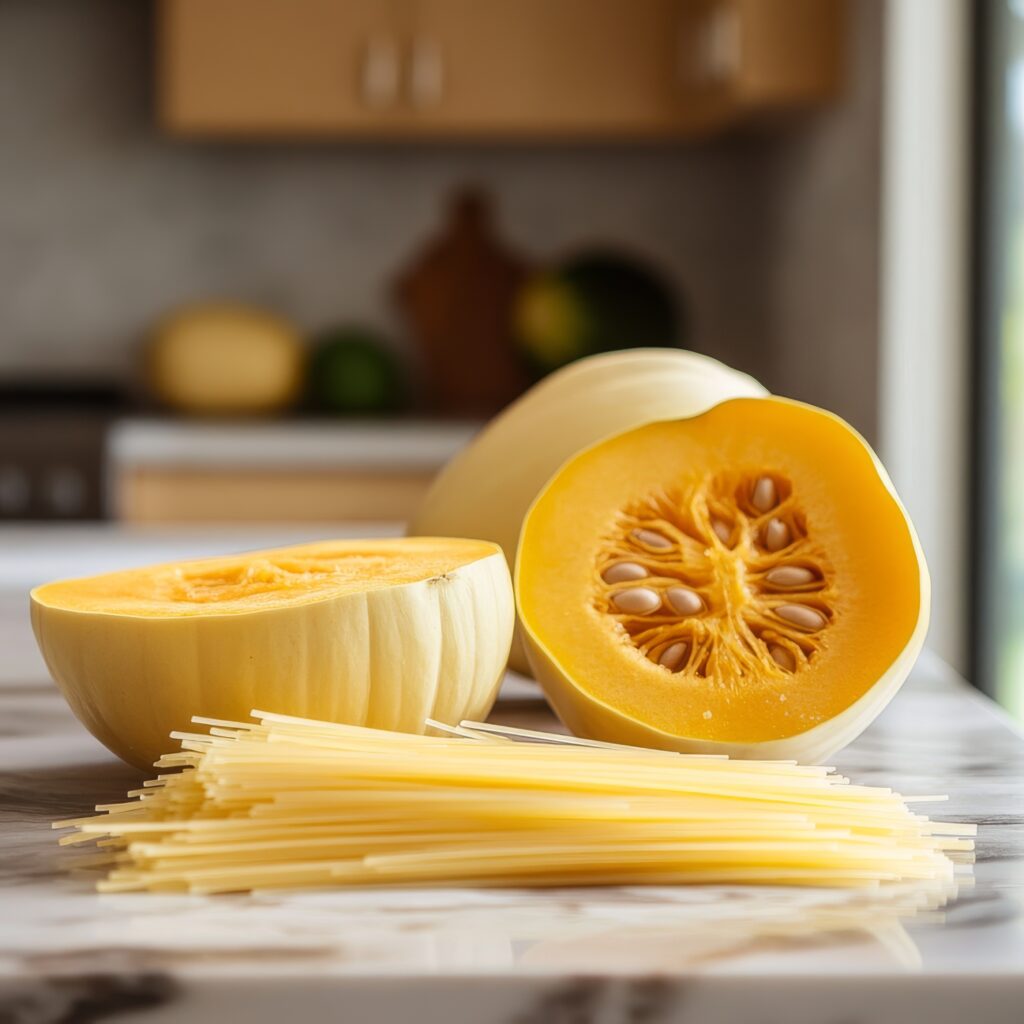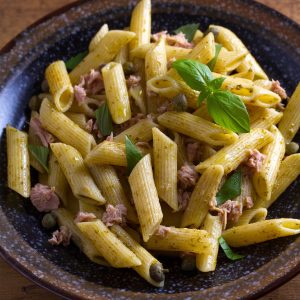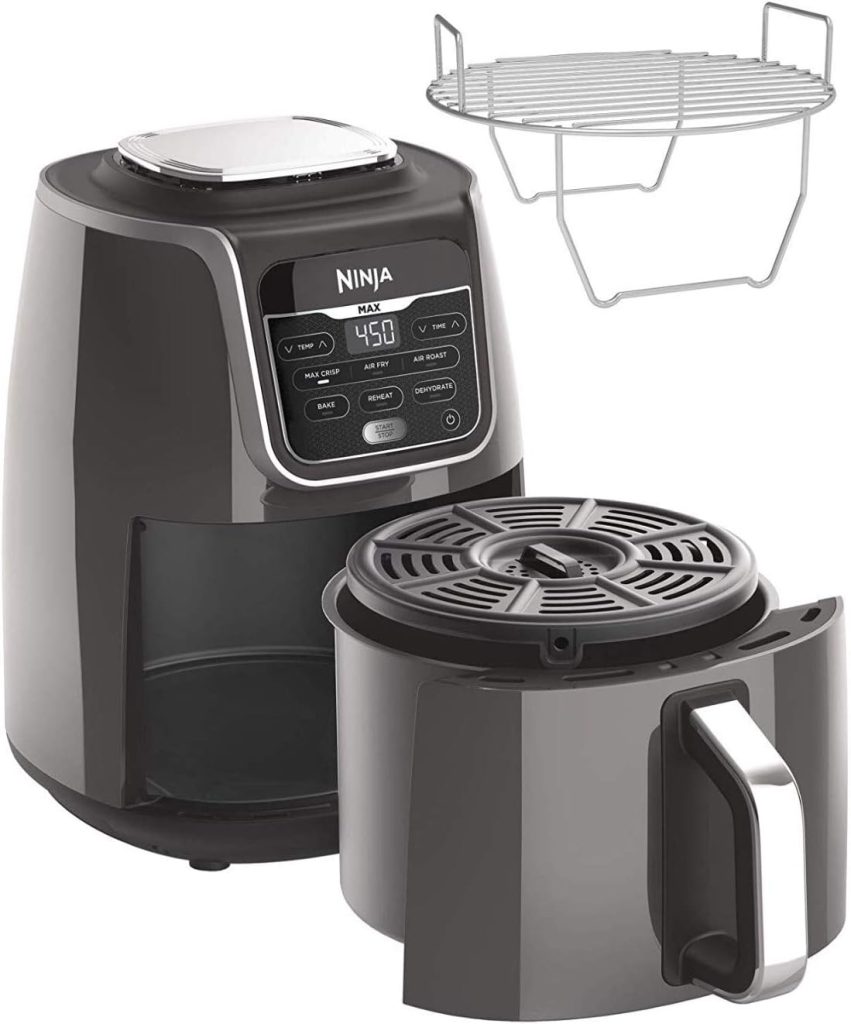The Best Low-Carb Diet Substitutions For Grains, Veggies, and More
Starting a low-carb diet can feel overwhelming, especially when it comes to swapping out familiar ingredients. Many recipes rely on high-carb staples like grains, legumes, starchy vegetables, and sugary additions. But with the right low-carb diet substitutions, you can recreate your favorite meals without derailing your diet. The key is understanding which low-carb diet substitutions work best and how to use them effectively.
I’ve compiled a helpful guide to low-carb ingredient swaps in this post. From replacing pasta with zucchini noodles to finding the perfect substitute for starchy potatoes, this chart will make your meal planning easier and more enjoyable. Whether you’re new to low-carb eating or simply looking to expand your recipe repertoire, these substitutions will keep your dishes flavorful and satisfying.
It’s important to remember that every person’s dietary needs are unique. I’m not a doctor or a nutritionist, so I encourage you to consult with your healthcare provider before making significant changes to your diet. That way, you can ensure that a low-carb lifestyle aligns with your health goals.
With these easy swaps, you can take the guesswork out of cooking low-carb meals and stay on track without sacrificing taste. Let’s dive into the world of low-carb diet substitutions and discover the possibilities!
Legumes Substitutions
Legume | Low-Carb Substitute | Notes |
| Lentils | Diced cauliflower or finely chopped mushrooms | Great for soups, stews, and curries; cauliflower absorbs flavors well. |
| Chickpeas (Garbanzo Beans) | Diced zucchini or roasted turnips | Use zucchini in salads or turnips in roasted dishes to mimic texture. |
| Black Beans | Eggplant cubes or diced radishes | Eggplant works in casseroles; radishes add crunch to salads or chili. |
| Kidney Beans | Chopped green beans or diced kohlrabi | Green beans look similar to soups and stews. |
| Pinto Beans | Roasted eggplant or cooked diced cabbage | Eggplant can be mashed for spreads, and cabbage works well in tacos or burrito bowls. |
| Navy Beans | Small cauliflower florets or chopped celery | Both substitutes work well in soups for texture and crunch. |
| Edamame (Soybeans) | Steamed broccoli or snow peas | Steamed broccoli has a mild flavor, and snow peas mimic the snap of edamame. |
| Lima Beans | Chopped asparagus or diced jicama | Asparagus offers a tender texture; jicama adds crunch to salads. |
| Split Peas | Chopped spinach or kale | Use these leafy greens in soups for a hearty, nutrient-rich substitute. |
| Butter Beans | Artichoke hearts or sautéed zucchini | Artichoke hearts provide a creamy texture; zucchini works in side dishes. |
| Black-Eyed Peas | Sautéed mushrooms or small broccoli florets | Mushrooms give a similar earthy flavor; broccoli works well in salads or soups. |
| Peanuts (technically a legume) | Almonds, walnuts, or sunflower seeds | Almonds or walnuts work as snacks, while sunflower seeds add crunch to salads or dishes. |
Notes on Substitutes
- Many legumes are high in carbs due to their starch content. These substitutes focus on low-carb, high-fiber vegetables or nuts that provide similar textures or flavors.
- Most substitutes work well in stews, soups, salads, or dips, where legumes typically appear.
Tips for Eating Legumes on a Low-Carb Diet
- Watch Portions: Stick to small servings, as carbs can add up quickly.
- Track Net Carbs: Subtract fiber from total carbs to calculate net carbs and ensure the legume fits within your carb allowance.
- Balance with Low-Carb Foods: Pair legumes with low-carb vegetables, protein, and healthy fats for a balanced meal.
Lower Calorie Legumes
You can eat a few legumes on a low-carb diet, but you need to pay attention to portion sizes, as legumes generally contain more carbs than non-starchy vegetables. Some legumes are lower in net carbs and can fit into a low-carb diet if consumed in moderation. Here are some of the best options:
Net Carbs per 1 Cup (Cooked): ~4g
Why It Works: Technically a legume, green beans are low in carbs and high in fiber, making them an excellent choice for a low-carb diet.
How to Use: Steam, roast, or sauté them as a side dish or add to salads and casseroles.
Net Carbs per 1 Cup (Raw): ~3-4g
Why It Works: These peas are lower in carbs compared to other legumes and can add crunch and sweetness to dishes.
How to Use: Eat them raw as a snack, toss in salads, or lightly sauté in stir-fries.
Net Carbs per ½ Cup (Cooked): ~4g
Why It Works: Edamame is high in protein and fiber and is a good snack or addition to salads for those following a low-carb diet.
How to Use: Steam and sprinkle with salt, or add to soups and grain-free bowls.
Net Carbs per ½ Cup (Cooked): ~1-2g
Why It Works: Lupini beans are one of the lowest-carb legumes due to their very high fiber content. They’re also rich in protein.
How to Use: Typically sold brined, they make an excellent snack or salad topping.
Net Carbs per ½ Cup (Cooked): ~1-2g
Why It Works: Black soybeans are incredibly low in net carbs and are a great alternative to traditional beans in recipes like chili or soups.
How to Use: Use them in place of black beans or kidney beans in stews and casseroles.
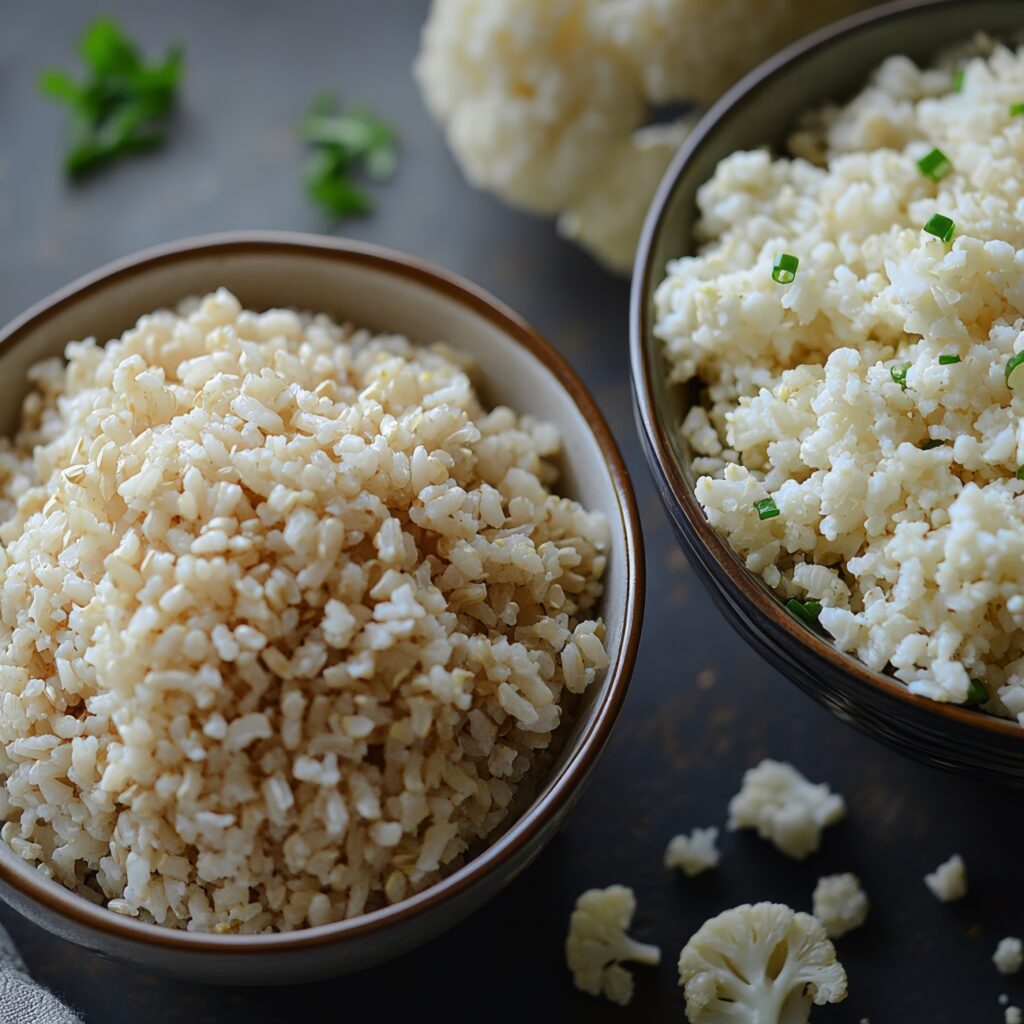
Grain Substitutions
Grains | Low-Carb Substitute | Notes |
| Rice (White or Brown) | Cauliflower rice or broccoli rice | Low in carbs and works well in stir-fries, curries, and as a base for bowls. |
| Quinoa | Hemp hearts or finely chopped almonds | Hemp hearts have a similar texture and are rich in healthy fats and protein. |
Couscous | Crumbled cauliflower or finely diced zucchini | Mimics the look and feel of couscous; perfect for salads or side dishes. |
Oats | Chia seeds or flaxseed meal | Use chia or flaxseeds soaked in liquid for a porridge-like texture. |
Wheat (Bread or Rolls) | Almond flour or coconut flour bread | Choose low-carb bread recipes using almond or coconut flour for sandwiches and toast. |
Cornmeal (Polenta) | Almond flour or mashed cauliflower | Almond flour works for baking, while cauliflower creates a creamy polenta alternative. |
| Barley | Chopped mushrooms or diced celeriac | Mushrooms or celeriac provide an earthy flavor and chewy texture. |
Farro | Diced cauliflower or turnips | Both substitutes are great for grain salads or soups, providing a hearty texture. |
Millet | Riced cauliflower or hemp hearts | Use in place of millet in casseroles or bowls. |
Bulgar Wheat | Crumbled cauliflower or shredded cabbage | Ideal for low-carb versions of tabbouleh or pilaf dishes. |
Pasta (Spaghetti, etc.) | Zucchini noodles, spaghetti squash, or shirataki noodles | Great for replicating pasta dishes with much fewer carbs. |
Tortillas (Corn or Flour) | Low-carb tortillas, lettuce wraps, or coconut wraps | Use lettuce or coconut wraps for tacos and burritos. |
Breadcrumbs | Crushed pork rinds, almond flour, or ground flaxseed | Perfect for coating, binding, or topping low-carb recipes. |
| Cereal (Granola) | Low-carb granola made with nuts, seeds, and coconut | A crunchy, satisfying alternative without the carbs from grains. |
Tips for Eating Grains on a Low-Carb Diet
- Control Portions: Stick to small servings (e.g., ¼–½ cup cooked) to manage carb intake.
- Combine with Low-Carb Foods: Pair grains with non-starchy vegetables, healthy fats, and protein to balance blood sugar levels.
- Limit Frequency: Treat grains as an occasional addition rather than a staple.
Lower Calorie Grains
A few grains can fit into a low-carb diet when consumed in moderation. While most grains are relatively high in carbohydrates, some are lower in net carbs and can work if you manage portions carefully. Here are some options:
Net Carbs per ½ Cup (Cooked): ~17g
Why It Works: While not super low-carb, quinoa is nutrient-dense, gluten-free, and rich in protein and fiber, which can offset its carb impact.
How to Use: Small portions in salads, as a side dish, or in soups.
Net Carbs per ½ Cup (Cooked): ~15g
Why It Works: Wild rice is lower in carbs compared to white or brown rice and is high in antioxidants and fiber.
How to Use: Add to soups, stews, or salads in small amounts.
Net Carbs per ½ Cup (Cooked): ~13g
Why It Works: Bulgur is partially pre-cooked, making it easier to digest, and contains moderate amounts of carbs with some fiber.
How to Use: Use sparingly in tabbouleh or as a base for grain bowls.
Net Carbs per ½ Cup (Cooked): ~17g
Why It Works: Hulled barley has more fiber and nutrients than pearled barley, reducing its net carb count slightly.
How to Use: Add to soups or stews in minimal amounts for texture.
Net Carbs per ½ Cup (Cooked): ~19g
Why It Works: High in protein, iron, and fiber, amaranth can be used in very small portions for added nutrition.
How to Use: Use sparingly in porridge or as a side dish.
Net Carbs per ½ Cup (Cooked): ~20g
Why It Works: Millet is gluten-free and has a lower glycemic index than other grains, which can help keep blood sugar more stable.
How to Use: Add in small amounts to soups or as a grain alternative in recipes
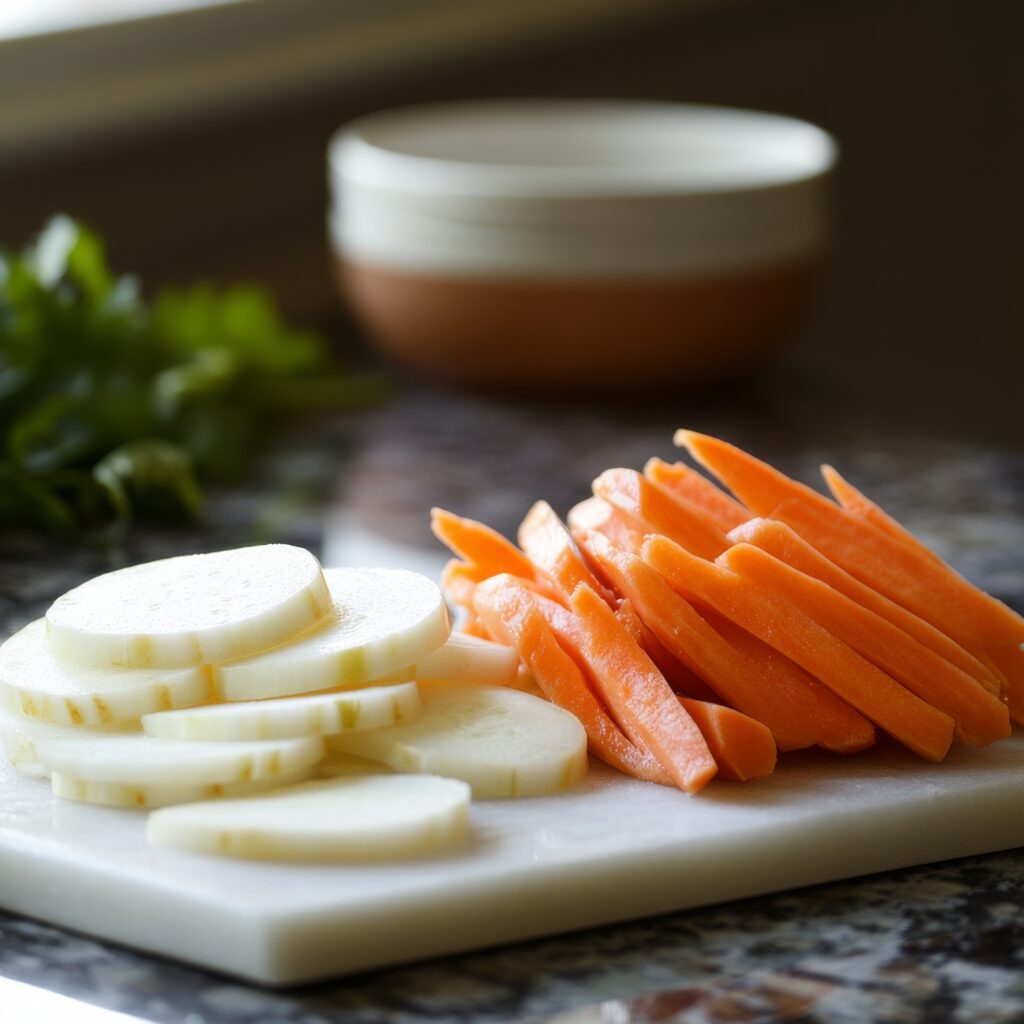
Starchy Vegetable Substitutions
Starchy Vegetables | Low-Carb Substitute | Notes |
| Potatoes | Cauliflower, turnips, or radishes | Mashed, roasted, or riced cauliflower mimics potatoes. Turnips and radishes work well roasted or boiled. |
Sweet Potatoes | Butternut squash (small portions) or pumpkin | Butternut squash and pumpkin have fewer carbs than sweet potatoes and offer a similar sweetness. |
Yams | Rutabaga or celeriac | Both substitutes are slightly sweet and have a firm texture, great for roasting or mashing. |
Corn | Cauliflower rice or diced zucchini | Use cauliflower rice in stir-fries or casseroles, and zucchini for a fresh crunch in salads. |
Parsnips | Daikon radish or kohlrabi | Both are mild, slightly sweet, and versatile for roasting or pureeing. |
Peas (Green) | Snow peas or snap peas (in moderation) | These are lower in carbs than green peas and can add crunch to meals. |
Winter Squash | Zucchini or spaghetti squash | Zucchini can be spiralized, while spaghetti squash is great for casseroles or pasta dishes. |
Carrots | Jicama or celery root (celeriac) | Jicama adds crunch to salads, while celery root can be roasted or mashed. |
Beets | Radishes or turnips | Radishes have a similar texture when cooked and are much lower in carbs. |
Plantains | Eggplant or zucchini | Thinly slice and roast eggplant or zucchini for a similar texture to baked plantains. |
Cassava (Tapioca) | Cauliflower or almond flour | For recipes like bread or thickening, cauliflower or almond flour can work as low-carb options. |
| Pumpkin (Canned) | Chayote squash or roasted zucchini | Chayote squash has a mild flavor and a similar texture, great for purees. |
Tips for Using Low-Carb Substitutes for Starchy Vegetables:
- Adjust Cooking Techniques: Many low-carb substitutes, like cauliflower, are versatile and can be mashed, roasted, riced, or pureed.
- Enhance Flavor: Use spices, herbs, and healthy fats to add depth to your substitutes.
- Portion Control: Even low-carb options can add up in carbs, so measure portions to stay on track.
Pasta Substitutions
Ingredient | What It Is | Why It Works |
| Zucchini Noodles (Zoodles) | Spiralized zucchini that resembles spaghetti. | It’s low-carb, low-calorie, and rich in vitamins like A and C. |
| Spaghetti Squash | A squash variety that, when cooked, separates into spaghetti-like strands. | Naturally low in carbs and has a mild, slightly sweet flavor. |
| Shirataki Noodles (Miracle Noodles) | Noodles made from konjac yam, containing almost no carbs or calories. | These are great for stir-fries or saucy dishes and absorb flavors well. |
| Cabbage Noodles | Thinly sliced cabbage that mimics noodles when cooked. | It’s inexpensive, low-carb, and adds a slight crunch. |
| Palmini (Hearts of Palm Pasta) | Pasta-like strands made from hearts of palm. | Low in carbs, with a firm, slightly al dente texture. |
| Eggplant or Zucchini Lasagna Sheets | Thinly sliced eggplant or zucchini used in place of lasagna noodles. | Adds a delicious, vegetable-forward flavor and keeps your dish low-carb. |
| Cauliflower Gnocchi | Gnocchi made from cauliflower (available pre-made in many stores). | Lower in carbs than traditional potato gnocchi. |
| Almond Flour or Coconut Flour Pasta | Specialty low-carb pasta made with almond or coconut flour. | Mimics traditional pasta while being grain-free and low-carb. |
| Seaweed Noodles | Noodles made from seaweed, like kelp noodles. | Extremely low-carb, gluten-free, and with a crunchy texture. |
| Celeriac (Celery Root) Noodles | Spiralized celery root that works well as a pasta substitute. | Low in carbs and offers a hearty texture similar to al dente pasta. |
Tips
- Pair these substitutes with rich, flavorful sauces like pesto, marinara, or Alfredo to replicate the pasta experience without the carbs.
- Combine with regular pasta to reduce carbs but still enjoy pasta flavor and texture.

